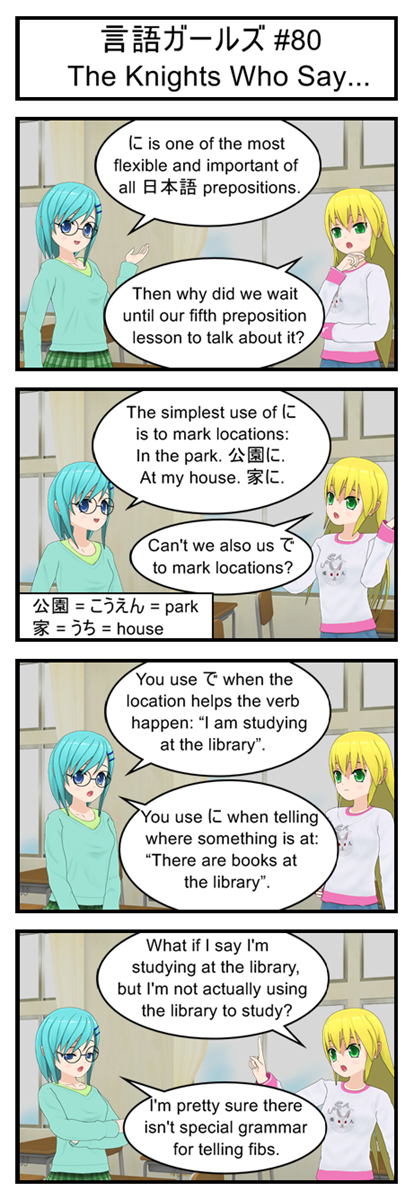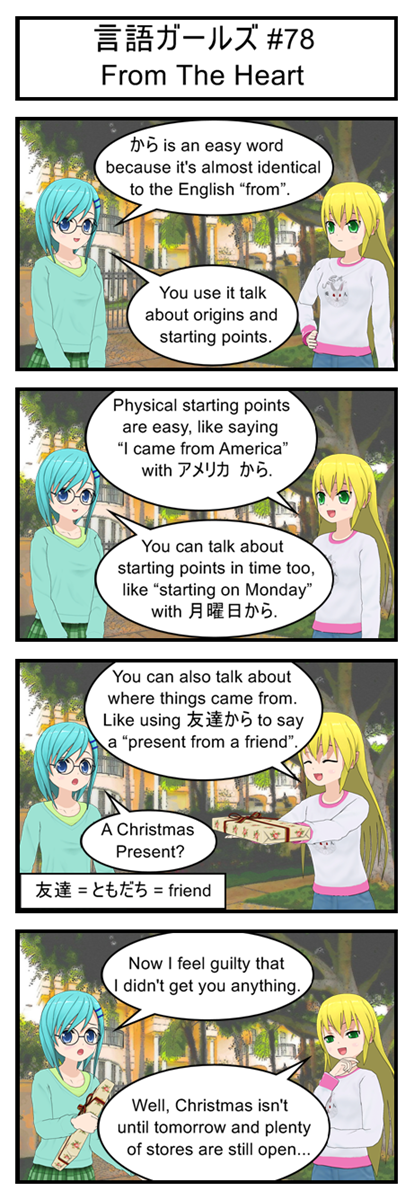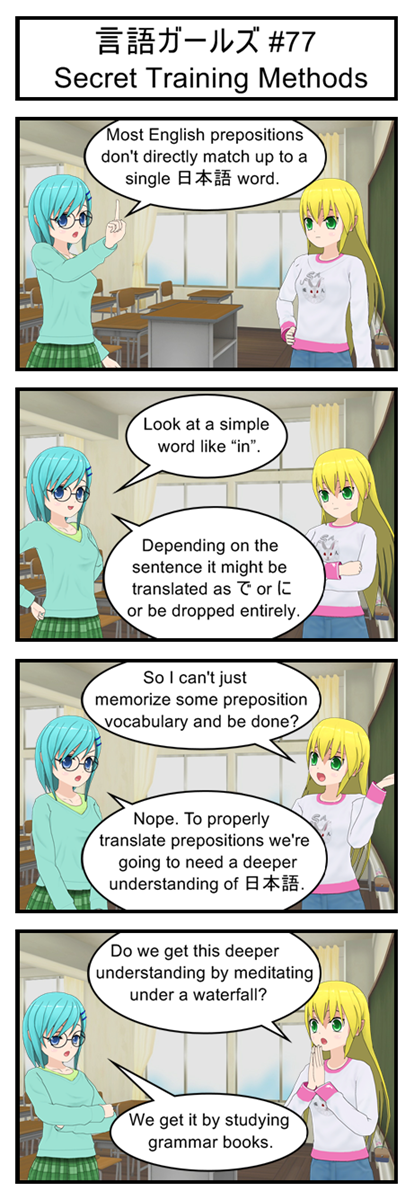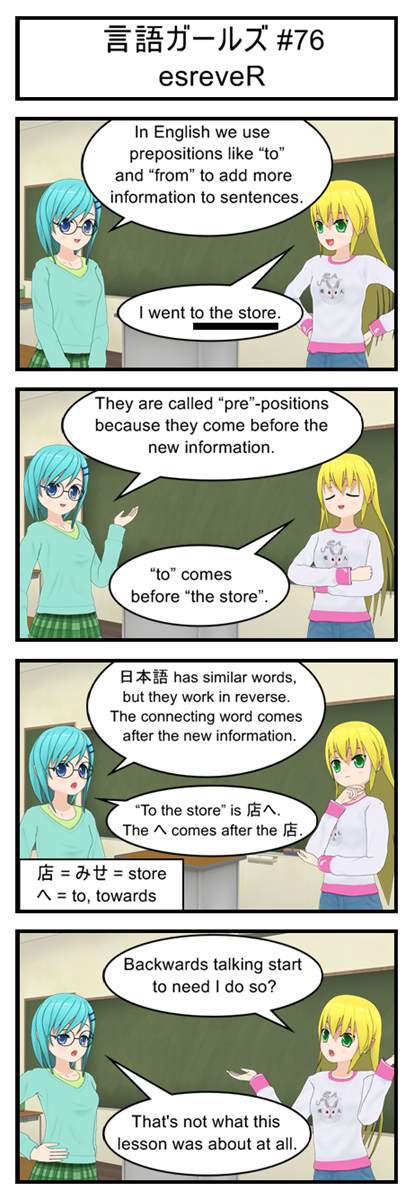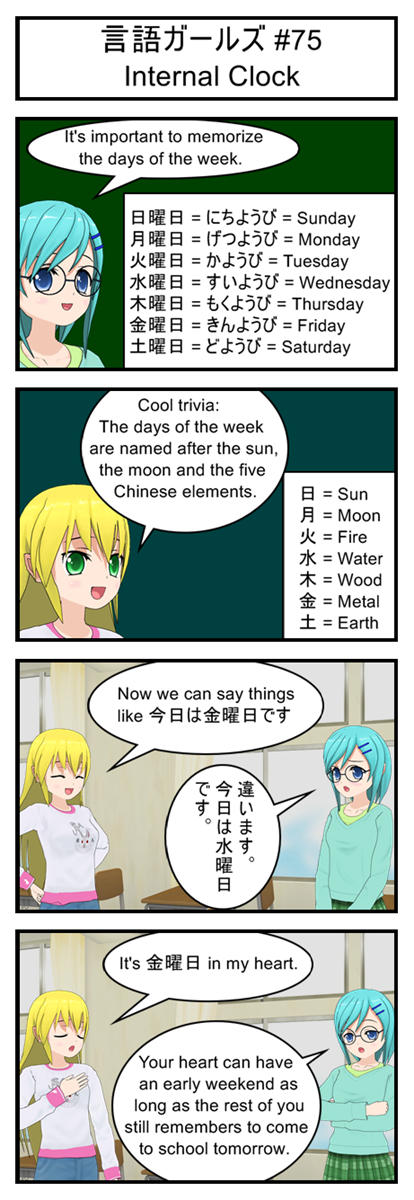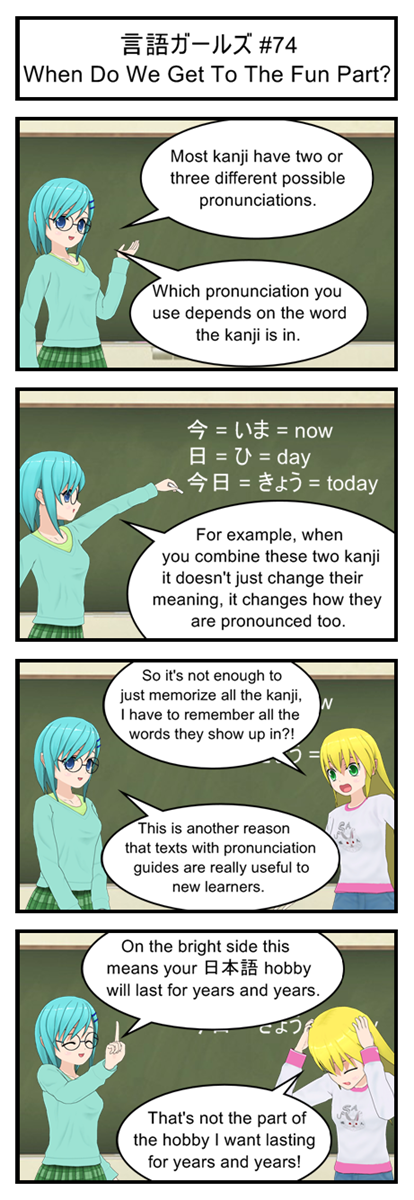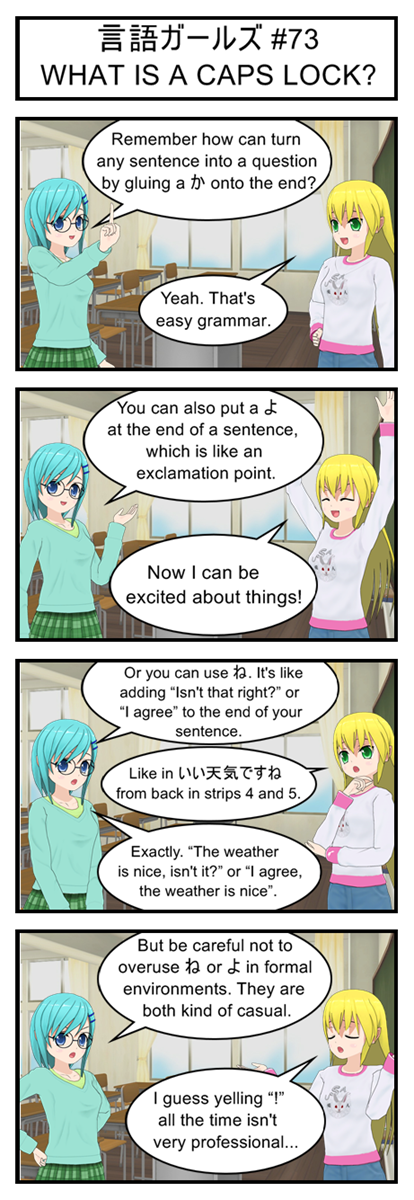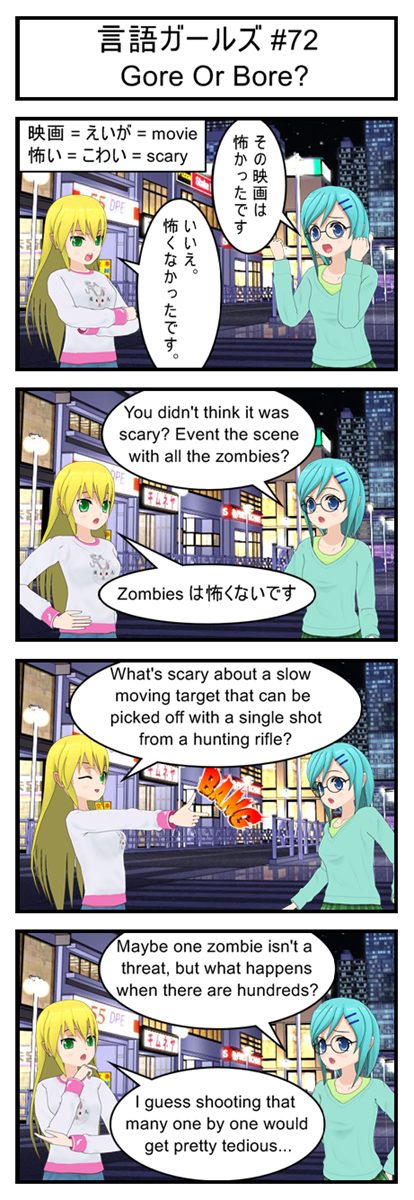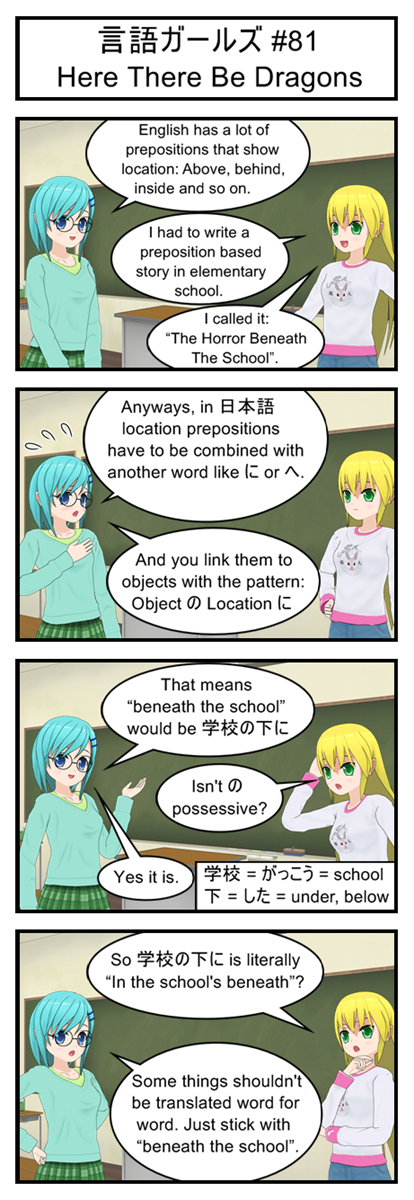
Quick tip for remembering that 下 means “under”: It’s a horizontal line with another line hanging “under” it. The opposite is 上 (うえ), which means “above” and has a line above the horizontal.
Vocabulary
学校 = がっこう = school
下 = した = under, below
Transcript
言語ガールズ #81
Here There Be Dragons
Blue: English has a lot of prepositions that show location. Above, behind, inside and so on.
Yellow: I had to write a preposition based story in elementary school.
Yellow: I called it: “The Horror Beneath The School”.
Blue: Anyways, in 日本語 location prepositions have to be combined with another word like に or へ.
Blue: And you link them to objects with the pattern: Object の Location に
Blue: That means “beneath the school” would be 学校の下に
Yellow: Isn’t の possessive?
Blue: Yes it is.
Yellow: So 学校の下に is literally “In the school’s beneath”?
Blue: Some things shouldn’t be translated word for word. Just go with “beneath the school”.
